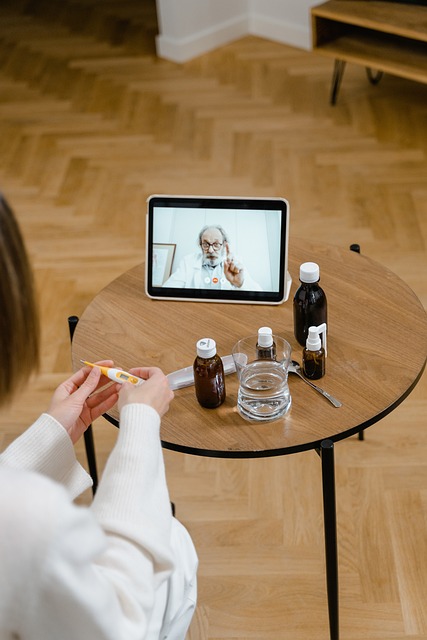Healthcare efficiency is a critical aspect of modern healthcare systems. With rising costs and increasing demands, finding ways to reduce expenses while improving the quality of services is essential. Efficient healthcare not only benefits patients by providing timely and effective care but also helps healthcare providers manage resources better and maintain financial sustainability.
The dual goals of reducing costs and improving services are at the forefront of healthcare management strategies. This article explores various strategies and roles that contribute to healthcare efficiency. Understanding these elements can help healthcare providers achieve a more streamlined and effective system.
So, without further ado, let’s discuss strategies for reducing costs and improving services in healthcare:
Role of Healthcare Administrators
Healthcare administrators play a crucial role in managing healthcare facilities and ensuring efficient operations. These professionals are responsible for overseeing the daily activities of hospitals, clinics, and other healthcare organizations. They ensure that the facility runs smoothly, that staff are well-coordinated, and patients receive quality care. The increasing complexity of healthcare systems and the need for efficient management have led to a growing demand for skilled healthcare administrators. If you’re interested in pursuing a career in this in-demand field, earning the relevant healthcare administration degree is a crucial first step.

For those wondering, what jobs can you get with a healthcare administration degree? The answer includes various positions such as hospital administrator, clinic manager, and health services manager. These roles are integral to maintaining the efficiency and effectiveness of healthcare services. Pursuing a career in healthcare administration offers opportunities to impact the healthcare system positively while addressing the increasing demand for well-managed healthcare facilities.
Implementing Technology Solutions
Technology plays a vital role in streamlining healthcare operations and reducing costs. The adoption of Electronic Health Records (EHRs) allows for the digital storage and retrieval of patient information, which enhances the accuracy and accessibility of medical records. This technology reduces the time spent on paperwork, minimizes errors, and improves coordination among healthcare providers.
Telemedicine is another technology that has revolutionized healthcare delivery. By enabling remote consultations, telemedicine reduces the need for in-person visits, saving time and resources for both patients and providers. It also enhances individuals’ access to healthcare services in remote or underserved areas. Implementing these technological solutions not only improves patient care but also contributes to the overall efficiency of healthcare systems by reducing operational costs and optimizing resource use.

Optimizing Resource Management
Efficient resource management is fundamental to healthcare efficiency. Proper utilization of medical equipment, staff, and facilities ensures that healthcare providers can meet patient needs without unnecessary delays or expenses. One effective strategy for optimizing resources is the use of data analytics to forecast demand and manage inventory.
Additionally, implementing scheduling systems for staff and equipment can significantly improve resource management. These systems help ensure that medical professionals and equipment are available when needed, reducing downtime and enhancing patient care. For example, a well-coordinated schedule can prevent overbooking and underutilization, allowing healthcare providers to operate more efficiently. By focusing on optimizing resource management, healthcare facilities can enhance service delivery while controlling costs.
Enhancing Patient Care Processes
Improving patient care processes is essential for enhancing healthcare efficiency. One method for achieving this is through patient flow management. Effective patient flow management ensures that patients move through the various stages of care smoothly, from admission to discharge. Streamlining these processes can reduce wait times, minimize bottlenecks, and ensure that patients receive timely care. This can be achieved through better scheduling, clear communication, and coordination among healthcare teams.
Another approach is the use of integrated care pathways. These are structured multidisciplinary care plans that outline the essential steps in the care of patients with specific clinical problems. Integrated care pathways help standardize care, reduce variability, and ensure that all patients receive evidence-based treatments. Implementing these pathways can improve patient outcomes, enhance the quality of care, and reduce unnecessary delays.
Reducing Administrative Costs
Administrative costs account for a significant portion of healthcare expenses. Reducing these costs is crucial for enhancing healthcare efficiency. One effective strategy is the automation of administrative tasks. Automation can streamline various processes, such as patient registration, billing, and appointment scheduling.
Another way to reduce administrative costs is by minimizing paperwork. Implementing electronic systems for medical records, billing, and communication can significantly cut down on the use of paper and the time spent on manual documentation. These systems enhance data accuracy, improve accessibility, and facilitate better coordination among healthcare providers. Reducing administrative burdens on healthcare professionals can lead to more efficient operations and better use of resources.
Leveraging Data Analytics
Data analytics plays a pivotal role in enhancing healthcare efficiency. Analyzing large sets of health data allows healthcare providers to identify patterns, predict patient needs, and allocate resources more effectively. This data-driven approach helps in making informed decisions that can improve patient outcomes and optimize operational efficiency.
Tracking and managing patient outcomes through data analytics helps healthcare providers identify best practices and areas for improvement. This continuous feedback loop ensures that care delivery remains effective and efficient. Implementing robust data analytics tools can lead to more personalized care, better resource management, and a significant reduction in overall healthcare costs.
Promoting Preventive Care
Promoting preventive care is a vital strategy for reducing long-term healthcare costs and improving patient outcomes. Preventive care involves measures taken to prevent diseases or detect them early when they are more manageable and less expensive to treat. Regular screenings, vaccinations, and lifestyle counseling are essential components of preventive care that can significantly reduce the incidence of chronic diseases and other health conditions.
Patient education is a crucial aspect of promoting preventive care. Educating patients about the importance of regular check-ups, healthy lifestyles, and early detection can encourage them to take proactive steps in managing their health. Healthcare providers can also implement programs that focus on preventive measures, such as smoking cessation, weight management, and diabetes prevention. By emphasizing preventive care, healthcare systems can improve overall health outcomes and reduce the need for more costly treatments in the future.

Conclusion
Healthcare efficiency is critical for reducing costs and improving the quality of services provided to patients. The role of healthcare administrators, the implementation of technology solutions, and the optimization of resource management are essential components in achieving this efficiency. Enhancing patient care processes, reducing administrative costs, and promoting preventive care further contribute to a more streamlined and effective healthcare system. By focusing on these strategies, healthcare providers can create a system that not only meets the needs of patients but also operates sustainably and efficiently. Continued efforts and innovations in these areas are essential for advancing healthcare efficiency and ensuring that patients receive the best possible care.









